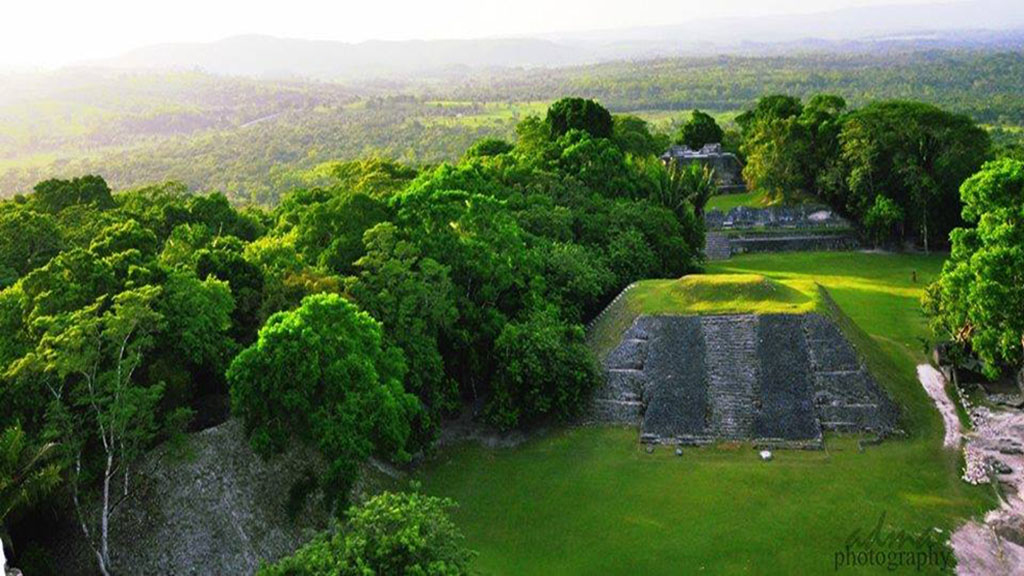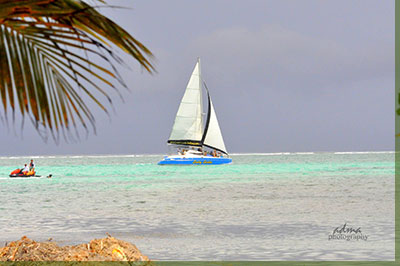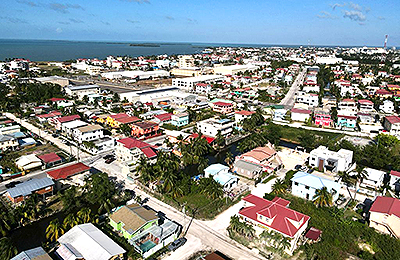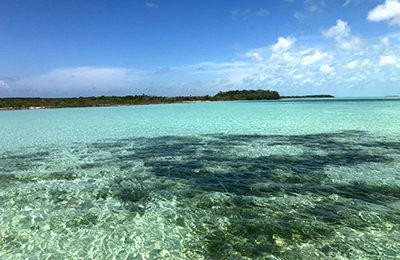


Belize, formerly British Honduras, is a country in Central America and a part of the Caribbean. Once part of the Mayan, and very briefly the Spanish Empire, it was most recently affiliated with the British Empire, prior to gaining its independence on the 21st day of September1981. The country is bordered to the south and west by Guatemala, to the north by Mexico, and to the east by the Caribbean Sea.
Belize has a diverse society, composed of many cultures and speaking many languages. It is the only country in Central America where English is an official language, although the Criol dialect (broken English) and Spanish are also widely spoken. With 8,867 square miles (22,960 km²) of territory and 320,000 people (2008 est.), the population density is the lowest in the Central American region and one of the lowest in the world. The country's population growth rate, 2.21% (2008 est.), is the highest in the region and one of the highest in the western hemisphere. It remains a Commonwealth realm. Culturally, Belize associates primarily with the English-speaking Caribbean countries such as Jamaica, or Trinidad and Tobago.

Belize is located on the Caribbean coast of northern Central America. It shares a border on the north with the Mexican state of Quintana Roo, on the west with the Guatemalan department of Petén, and on the south with the Guatemalan department of Izabal. To the east in the Caribbean Sea, the second-longest barrier reef in the world flanks much of the 386 kilometers of predominantly marshy coastline. Because Belize area is 22,960 square kilometers it is said to be an area slightly larger than El Salvador or Massachusetts. The abundance of lagoons along the coasts and in the northern interior reduces the actual land area to 21,400 square kilometers.
Belize is shaped like a rectangle that extends about 280 kilometers north-south and about 100 kilometers east-west, with a total land boundary length of 516 kilometers. The undulating courses of two rivers, the Hondo and the Sarstoon, define much of the course of the country's northern and southern boundaries. The western border follows no natural features and runs north-south through lowland forest and highland plateau. The north of Belize consists mostly of flat, swampy coastal plains, in places heavily forested. The flora is highly diverse considering the small geographical area. The south contains the low mountain range of the Maya Mountains. The highest point in Belize is Doyle's Delight at 3,688 ft (1,124 m.).

The Caribbean coast is lined with a coral reef and some 450 islets and islands known locally as Cayes (pronounced "keys"). They total about 690 square kilometers, and form the approximately 200 mile (322 km) long Belize Barrier Reef, the longest in the Western Hemisphere and the second longest in the world after the Great Barrier Reef. Three of the four coral atolls in the Western Hemisphere are also located off the coast of Belize.
Belize has a tropical climate with pronounced wet and dry seasons, although there are significant variations in weather patterns by region. Temperatures vary according to elevation, proximity to the coast, and the moderating effects of the northeast trade winds off the Caribbean. Average temperatures in the coastal regions range from 24°C in January to 27°C in July. Temperatures are slightly higher inland, except for the southern highland plateaus, such as the Mountain Pine Ridge, where it is noticeably cooler year round. Overall, the seasons are marked more by differences in humidity and rainfall than in temperature.

Average rainfall varies considerably, ranging from 1,350 millimeters in the north and west to over 4,500 millimeters in the extreme south. Seasonal differences in rainfall are greatest in the northern and central regions of the country where, between January and April or May, fewer than 100 millimeters of rain fall per month. The dry season is shorter in the south, normally only lasting from February to April. A shorter, less rainy period, known locally as the "little dry," usually occurs in late July or August, after the initial onset of the rainy season.
Hurricanes have played key--and devastating--roles in Belizean history. In 1931 an unnamed hurricane destroyed over two-thirds of the buildings in Belize City and killed more than 1,000 people. In 1955 Hurricane Janet leveled the northern town of Corozal. Only six years later, Hurricane Hattie struck the central coastal area of the country, with winds in excess of 300 kilometers per hour and four-meter storm tides. The devastation of Belize City for the second time in thirty years prompted the relocation of the capital some eighty kilometers inland to the planned city of Belmopan. The most recent hurricane to devastate Belize was Hurricane Greta, which caused more than US$25 million in damages along the southern coast in 1978.

According to the most recent vegetation surveys, about sixty percent (60%) of Belize is forested, with only about twenty percent (20%) of the country's land subject to human uses (such as agricultural land and human settlements). Savanna, scrubland and wetland constitute extensive parts of the land. As a result, Belize's biodiversity is rich, both marine and terrestrial, with a host of flora and fauna. About thirty-seven percent (37%) of Belize's land territory falls under some form of official protected status. Although a number of economically important minerals exist in Belize, none has been found in quantities large enough to warrant their mining. These minerals include dolomite, barite (source of barium), bauxite (source of aluminum), cassite (source of tin), and gold. In 1990 limestone, used in road building, was the only mineral resource being exploited for either domestic or export use.
The similarity of Belizean geology to that of oil-producing areas of Mexico and Guatemala prompted oil companies, principally from the United States, to explore for petroleum at both offshore and on-land sites in the early 1980s. Initial results were promising, but the pace of exploration slowed later in the decade, and production operations had been halted. As a result, Belize remains almost totally dependent on imported petroleum for its energy needs. In 2006, the cultivation of newly discovered Crude Oil in the town of Spanish Lookout, has presented new prospects and problems for this developing nation.[10] The country also possess considerable potential for hydroelectric and other renewable energy resources, such as solar and biomass. In the mid-1980s, one Belizean businessman even proposed the construction of a wood-burning power station for the production of electricity, but the idea foundered in the wake of ecological concerns and economic constraints.